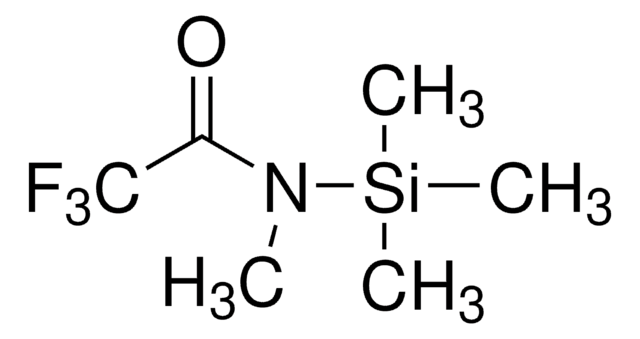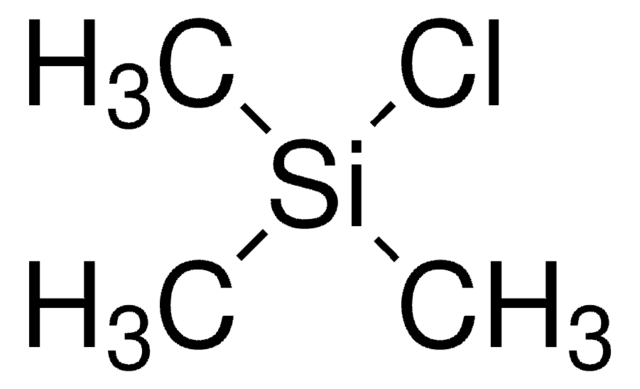M-132
MSTFA Reagent
ampule of 10 × 1.2 mL, analytical standard, Cerilliant®
Synonym(s):
N-Methyl-N-(trimethylsilyl)trifluoroacetamide, N-Trimethylsilyl-N-methyl trifluoroacetamide, MSTFA
About This Item
Recommended Products
grade
analytical standard
Quality Level
vapor density
>1 (vs air)
vapor pressure
8.8 mmHg ( 27 °C)
reaction suitability
reagent type: derivatization reagent
reaction type: Acylations
packaging
ampule of 10 × 1.2 mL
manufacturer/tradename
Cerilliant®
technique(s)
gas chromatography (GC): suitable
refractive index
n20/D 1.38 (lit.)
bp
130-132 °C (lit.)
density
1.075 g/mL at 25 °C (lit.)
application(s)
forensics and toxicology
format
neat
storage temp.
−20°C
SMILES string
CN(C(=O)C(F)(F)F)[Si](C)(C)C
InChI
1S/C6H12F3NOSi/c1-10(12(2,3)4)5(11)6(7,8)9/h1-4H3
InChI key
MSPCIZMDDUQPGJ-UHFFFAOYSA-N
Looking for similar products? Visit Product Comparison Guide
General description
Application
- Analysis of estrogen steroids such as estrone (E1), 17α-ethinylestradiol (EE2), and trenbolone acetate metabolites, melengestrol in environmental matrices using gas chromatography coupled to mass spectrometry (GC-MS).
- Quantification of ibuprofen, naproxen, ketoprofen, and diclofenac in wastewater samples using gas chromatography coupled to mass spectrometry (GC-MS).
Features and Benefits
- Very volatile of TMS-acetamides.
- More volatile than BSA or BSTFA but with similar silylation strength.
- Useful in the analysis of volatile trace materials.
- Used in the preparation of volatile and thermally stable derivatives for GC and MS analysis.
Legal Information
Signal Word
Warning
Hazard Statements
Precautionary Statements
Hazard Classifications
Eye Irrit. 2 - Flam. Liq. 3 - Skin Irrit. 2 - STOT SE 3
Target Organs
Respiratory system
Storage Class Code
3 - Flammable liquids
WGK
WGK 3
Flash Point(F)
78.8 °F - closed cup
Flash Point(C)
26 °C - closed cup
Choose from one of the most recent versions:
Certificates of Analysis (COA)
Sorry, we don't have COAs for this product available online at this time.
If you need assistance, please contact Customer Support.
Already Own This Product?
Find documentation for the products that you have recently purchased in the Document Library.
Customers Also Viewed
Our team of scientists has experience in all areas of research including Life Science, Material Science, Chemical Synthesis, Chromatography, Analytical and many others.
Contact Technical Service







